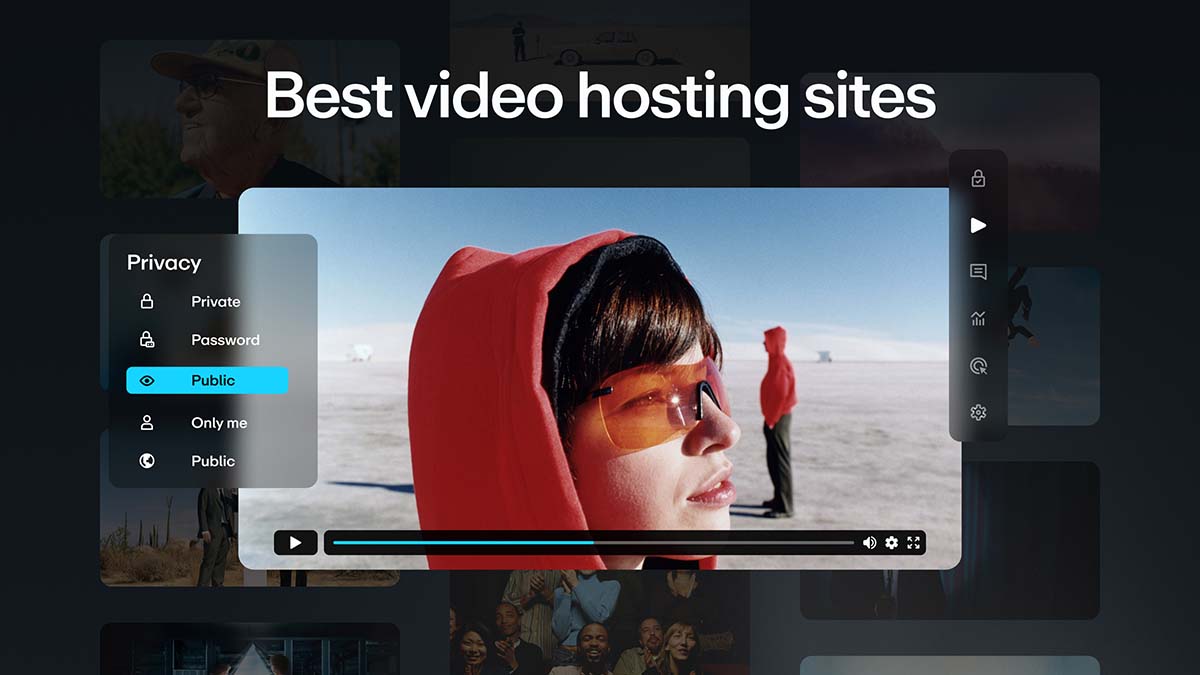Why onboarding matters more than ever
Onboarding is hard. The best experiences strike a balance between information—what the new hire needs to know—and inspiration—how you want them to feel. Studies show that employees who don’t have a positive new hire experience are twice as likely to look for a new job, while those who do are three times more likely to feel committed to their new role.
Yet, only 12 % of employees strongly agree their organization does a great job of onboarding new hires, according to our guide.
As remote and hybrid work become the norm, HR teams must ask: What story does our onboarding process tell new employees? How well are we communicating our company culture and values from the start?
Video can help bridge that gap—bringing human connection back into the onboarding process and transforming the first-day experience into something memorable and engaging.
Start before the first day: Preboarding sets the tone
According to Greenhouse, 83 % of high-performing companies begin their onboarding process before a new employee’s first day. Every touchpoint—from the job post to the offer letter—tells potential hires something about your organization’s values and expectations.
Those early moments are crucial. Nearly 22 % of turnover occurs within the first 45 days of employment, making it vital to start shaping your story before the employee ever logs in.
Consider adding preboarding videos to welcome new team members personally. A short message from leadership or a peer helps introduce your culture and sets expectations. Even official communications, like HR paperwork and checklists, can include quick how-to videos to reduce friction and humanize the process.
Early feedback matters too: only 26 % of new hires are asked for feedback about their candidate journey. Inviting opinions before day one signals that their voice is valued from the start.
Designing a great first day (and beyond)
The first day is often a whirlwind of forms, introductions, and logins. After that, the best onboarding processes empower new hires to shape their own learning experience.
People remember how they felt during onboarding more than what they were told. Use video to replace static slide decks and give new employees a visual sense of your people and purpose. A recorded welcome from the CEO or department head can go a long way toward making them feel part of the team from day one.
Professional development should also start early. Prioritizing learning opportunities during onboarding increases employee satisfaction by 3.5×, and continuous training helps new hires ramp faster and stay engaged.
Create informal spaces for connection
In-office employees bond naturally—over coffee breaks, hallway chats, or shared lunches. In remote settings, those moments disappear, and so does much of the informal culture learning that shapes belonging.
To recreate that dynamic online, consider dedicated team channels (Slack, Teams) for casual chat, memes, or Q&A threads. Schedule low-pressure, interactive sessions such as live quizzes or virtual coffee hours to help new hires connect.
Give employees control, too: instead of dictating a linear path, open up your onboarding library so they can navigate at their own pace. Recording live sessions and archiving them in a video library allows new hires to rewatch training whenever they need to refresh.
Nearly 57 % of HR leaders say managers lack time to improve onboarding. Turning repetitive meetings into short, searchable videos helps solve that problem and provides scalable onboarding support.
Keep learning going: The 30-60-90 framework
Only 37 % of companies extend onboarding beyond one month, and 15 % end it after just one day. But the best programs last at least 90 days—some even a full year—ensuring new hires have the support and resources to reach full productivity.
Structured plans, such as 30-60-90 onboarding check-ins, give employees clarity on milestones and priorities. Regular feedback loops and one-on-one conversations reinforce progress and create accountability.
Equally important: continue fostering informal knowledge sharing. In offices, employees might “tap someone on the shoulder” to ask quick questions. Online, that can be replicated through a video FAQ library or buddy system, where new hires can find answers without scheduling formal meetings.
Extending onboarding beyond the initial phase improves retention and builds long-term engagement.
Using video to simplify, scale, and humanize onboarding
Video can make your onboarding program more dynamic and scalable. With tools like Vimeo Enterprise, HR teams can:
- Record personalized welcome messages and training sessions.
- Organize content in a central video library with easy updates—no broken links or outdated embeds.
- Provide SSO security and granular permissions for each team member.
- Measure engagement through detailed analytics and viewer insights.
- Support managers by replacing long meetings with reusable recordings.
When you bring your onboarding content to video, you communicate more than logistics—you express your company culture in a way that connects emotionally with new hires.
Download the full remote onboarding guide
To explore all 10 onboarding best practices, templates, and examples, read the full Vimeo Reimagine Your Remote Onboarding Guide →
FAQs
What is employee onboarding?
Employee onboarding is the process of integrating new hires into an organization—from preboarding and paperwork to training and cultural alignment. It sets the foundation for retention and performance.
How long should onboarding last?
While many companies stop after the first week, best-in-class programs last at least 90 days and include continuous feedback and learning opportunities.
How can video improve onboarding?
Video humanizes communication, strengthens cultural storytelling, and simplifies training by turning static materials into engaging, visual experiences.







